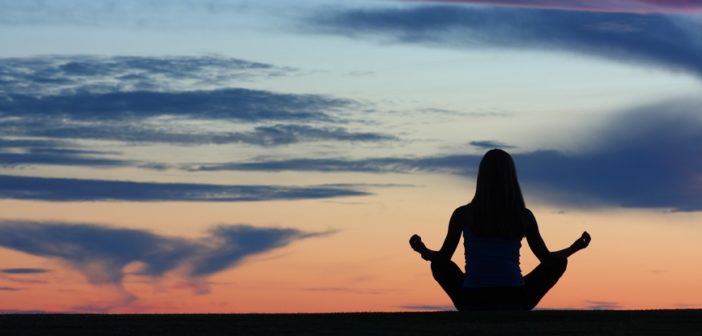Need a positive way to start your year? Well, I’ve got an idea for you: joining the movement that’s afoot to pair yoga with recovery. Need more? Well, here’s one woman leading the pack out in Canada.
“I’m in recovery from codependency, which is of course a really common theme for the children of addicts,” says Taryn Strong, a Victoria, Canada-based yoga teacher who’s at the forefront of the yoga practice recovery movement. “I also feel like I’m in recovery from self-doubt and low self-esteem.”
Not all young women are as self-aware and honest as Strong but not all women are able to see the solid connection between recovery from addiction and all those Downward Dogs. Though combining yoga with recovery work makes sense—a spiritual connection and mind-body integration are strong components of both—it took people like Strong to put yoga recovery on the map.
Of course you don’t just wake up one day with the idea that more people could find recovery if they had some yoga asanas. When Strong first did yoga in her living room in 2004 with a box set of DVDs her sister had given her, she didn’t understand the lifelong impact yoga would have on her life.
But at her first yoga class, “the teacher talked about gratitude,” Strong recalls. “Before then, it had always been hard for me to cultivate gratitude. But after that class, suddenly the sky seemed bluer and the grass greener than it had been before.”
Though Strong isn’t herself an addict, she’s as immersed in the addiction and recovery world as a non-addict could be. The daughter of two addicts, Strong dabbled with drugs as a teenager. “I was 16 and dating a 17-year-old who was dealing crack,” Strong recalls. “I was doing cocaine, crystal meth, everything. With drugs, I was able to find what I thought was confidence.”
Because both of her parents were by then in recovery and thus able to not only see what was going wrong with their daughter but also to help in effective ways, Strong soon found herself seeing both a regular therapist and a drug therapist. And, once she was back on track, she realized that her real issue wasn’t drugs but codependency. Of course seeing the issues doesn’t mean they’re fully conquered. “I still struggle with codependency when it comes to my dad,” Strong admits.
And that’s where yoga comes into play. For many, recovery in 12-step rooms can only take them so far. As Tommy Rosen, the renowned yoga teacher, author of Recovery 2.0: Move Beyond Addiction and Upgrade Your Life and AfterPartyPod guest, says, “12-step programs do not address your body, your breath or your diet.”
But yoga does.
For Rosen, it wasn’t until he was a decade into his sobriety—still acting out with gambling, women and cigarettes—that he made the connection that breathing well “counters the sense of lack that plagues most addicts.” It wasn’t long after that when he realized that he could help teach others about the results that could come from combining 12-step work with yoga.
Strong stumbled across the same information once she was also fairly far along in her recovery work. “I really started seeing the similarities in what my yoga teachers were saying and what I was hearing in 12-step meetings,” she says. “They were the same things but being said in different ways.”
Back then, she says, “yoga for recovery felt really underground.” A few years later, once people like Rosen and fellow yoga recovery advocates Nicki Meyer and Rolf Gates started popping up, Strong felt certain she was onto something. By then, she had already developed her own yoga recovery method.
“I didn’t call it 12-step yoga,” Strong says. “I didn’t want people to say, ‘I’m not in a 12-step program—can I still take your class?’ Or I didn’t want them to not want to take my class because of the 12-step angle.” Through “trial and error,” Strong developed her yoga and recovery combo until it fit into “a broader umbrella.”
“I’ll use 12-step lingo subtly,” she says. “If you’re in 12-step, you’re going to know what I’m talking about. But I’m not going to announce, ‘This is Step One!’ in the middle of class. I don’t want people to think I’m ramming 12-step down their throat.”
Rest assured, Strong know what she’s talking about when it comes to bringing recovery to the masses; she’s actually the co-creator (along with her mom, Dr. Dawn Nickels) of the immensely popular recovery site SheRecovers, which provides resources for women (in the form of books and websites), hosts retreats all over the world (their next one is in Templeton, California in May, 2015) and has a Facebook group composed of nearly 100,000 women.
Strong knew for a long time that she wanted to work in recovery; she even took a course in becoming an addiction counselor. But, she says, the Western approach didn’t completely resonate with her. And so she found her own way—in turn changing the way her students approach both yoga and the rest of their lives. “I encourage students,” she says, “to let go of expectations and limitations.”
Spoken like a (very wise) addiction counselor.
For more about Strong’s addiction and recovery program, click here.
Sponsored DISCLAIMER: This is a paid advertisement for California Behavioral Health, LLC, a CA licensed substance abuse treatment provider and not a service provided by The Fix. Calls to this number are answered by CBH, free and without obligation to the consumer. No one who answers the call receives a fee based upon the consumer’s choice to enter treatment. For additional info on other treatment providers and options visit www.samhsa.gov.





